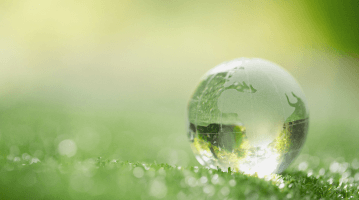How to measure sustainable development?
For sustainable development to be a tangible concept, it has to be measured. Among all the diverging points of view, the multitude of different fields of action and both short- and long-term outlooks, it can be very tricky indeed to measure sustainable development!
Measuring sustainable development, a recent concept
In 1987, the Brundtland Report defined the concept of sustainable development and set out the need to establish appropriate ways of measuring it. Why measure sustainable development? Because developing measurement criteria helps to channel actions in the right direction and structure a proper framework. Measurements are there to help sustainable development be applied properly, through both short- and long-term actions.
Why measure sustainable development?
- In the short term, to help us understand the direct effects of actions taken and the progress we’ve made in relation to precise targets.
- To inform decision-makers: persistent problems and trends tend to make progress only very gradually, step by step, requiring a more global view.
- To monitor effects over time, ensuring long-term action takes place.
- To raise awareness of what’s even possible in the longer or shorter term, linking actions to the values of sustainable development.
Although necessary, measuring can be tough.
Sustainable development is a global concept, not limited by time or space. Strictly speaking, sustainable development isn’t a reality, but an idea. Its scope is broad, and its various stakeholders each have their own approach to its values: equity, social justice, environmental protection, etc. The indicators deemed relevant largely depend on each stakeholder’s individual vision of the world. And yet the challenge of developing measurement criteria and indicators lies in finding a truly global measure, one that’s valid for everyone and can be recognised on an international scale. That’s why the introduction of indicators is still a fairly recent phenomenon and, most importantly, still a work in progress. Scientists and statisticians established the first set of criteria based on the first set of actions, adjusting them as concepts evolved over time. In 1987, the Human Development Index (HDI) was introduced to take the more human aspect of quality of life into account, as opposed to Gross Domestic Product (GDP), an exclusively economic measure. The concept of our ecological footprint only really took off in 2002 at the Johannesburg Earth Summit.
Criteria and measures put in place by different countries
As part of their sustainable development strategies, many countries develop their own criteria and indicators in relation to their own targets. One of the most widely used indicators on an international level is ecological footprint. It measures the surface area required by a population to meet its needs and absorb its waste. It takes into account use of natural resources in people’s lifestyles, land-use planning, industry and agriculture, etc. The whole point of measuring our footprint is to compare it with the surface area available, or bio-capacity – are we using more than nature can give us?
The UK’s ecological footprint
Speaking of ecological excess, the United Kingdom uses 4.21ha per person, whereas its capacity is just 1.08ha per person. So if the whole planet lived like the UK, we’d need almost four times the bio-capacity, i.e. another three whole planets at our disposal!
A frontrunner in measuring sustainable development, Bhutan introduced the Gross National Happiness (GNH) index in the 1970s.
Alongside GDP (Gross Domestic Product), which is limited to the economics alone, the GNH index includes economic, spiritual, ecological and cultural measures. The HDI is now more widely used. While GDP takes mainly market activities into account, Québec in Canada has proposed the Soft Domestic Product (SDP) to show the impact of voluntary and non-market activities on a country’s economy. It reveals wealth not previously considered by economic indicators.
It’s only a short leap from setting up an indicator to taking a more socially responsible approach. By seeking to make a sustainability target tangible and achievable, developing and selecting an indicator is already a positive step towards sustainable development.

What is sustainable development?
Environmental protection? Changing consumer habits? Reducing inequality? Sustainable development is all those things and more. A core concept that has been explored and broadened since it first came into use in the early 1990s. Klorane Botanical Foundation can help shine some light on the concept.
